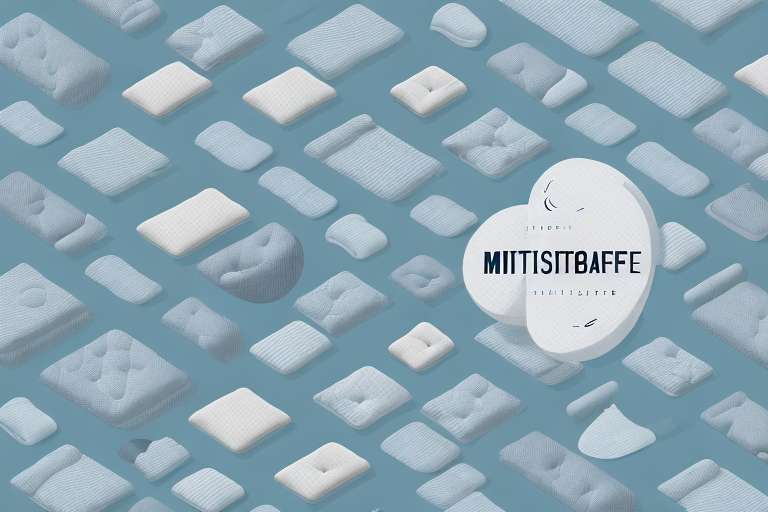Are you tired of waking up with a sore back every morning? Does your mattress seem to sink in the middle, making it difficult to get a good night’s sleep? If so, you’re not alone. Millions of people worldwide struggle with the problem of mattress sagging. In this article, we’ll explore the causes of sagging and how to fix it to ensure you get the restful sleep you need to be at your best.
Why Your Mattress is Sinking in the Middle
The most common cause of mattress sagging is poor quality materials. When you buy an inexpensive mattress, it’s likely made of low-quality materials that aren’t designed to last. Over time, the materials break down, leading to sagging in the middle. Another cause of sagging is worn-out springs. When springs wear out, they can no longer provide adequate support, leading to sagging in the middle.
However, there are other factors that can contribute to mattress sagging. One of these is improper use. For example, if you frequently sit on the edge of your mattress or jump on it, this can cause the materials to compress and break down more quickly, leading to sagging. Additionally, if you don’t rotate your mattress regularly, this can cause uneven wear and tear, which can also lead to sagging in the middle.
It’s important to note that even high-quality mattresses can eventually sag over time. This is because the materials will naturally break down and lose their ability to provide adequate support. To prolong the life of your mattress and prevent sagging, it’s recommended to invest in a high-quality mattress and rotate it regularly. You can also consider using a mattress topper or replacing worn-out springs to help maintain the mattress’s support and prevent sagging in the middle.
The Health Risks of Sleeping on a Sunken Mattress
While a sagging mattress might not seem like a big deal, it can have serious long-term health consequences. Sleeping on a sunken mattress can lead to poor sleep quality, back pain, and even spinal misalignment. Over time, chronic pain and discomfort can lead to depression, anxiety, and other mental health issues.
In addition to physical health risks, a sunken mattress can also have negative effects on your sleep hygiene. A sagging mattress can trap allergens, dust mites, and other irritants, leading to respiratory problems and allergies. This can cause you to wake up frequently during the night, disrupting your sleep cycle and leaving you feeling tired and groggy in the morning.
Furthermore, a sunken mattress can also affect the quality of your partner’s sleep. If one side of the bed is sagging, it can cause the other side to tilt, leading to discomfort and poor sleep quality for both partners. This can lead to relationship problems and further exacerbate the negative effects of poor sleep on your mental and physical health.
Signs You Need to Fix Your Sagging Mattress
If you wake up feeling tired and achy, or you notice that your mattress is visibly sagging in the middle, it’s time to take action. Other signs that your mattress needs to be replaced or repaired include visible wear and tear, lumps, and bumps, and creaking sounds when you move around at night.
Another sign that your mattress needs to be fixed is if you find yourself constantly tossing and turning throughout the night. This could be due to discomfort caused by the sagging or unevenness of the mattress. Additionally, if you notice that your allergies are acting up more than usual, it could be a sign that your mattress is harboring dust mites and other allergens.
It’s important to address these issues as soon as possible, as sleeping on a sagging or worn-out mattress can lead to poor sleep quality, back pain, and other health problems. Depending on the severity of the issue, you may need to replace your mattress entirely or simply invest in a mattress topper or other support system to help alleviate the sagging.
The Causes of Mattress Sagging and How to Prevent It
To prevent mattress sagging, it’s important to invest in a quality mattress made of durable materials. Regularly rotating and flipping your mattress can also help distribute weight more evenly and prevent sagging. If you’ve already noticed sagging in your mattress, there are still steps you can take to prevent it from getting worse. Placing a supportive mattress topper on your bed can provide additional support, and investing in a sturdy bed frame can also help distribute weight more evenly and prevent sagging in the middle.
Another common cause of mattress sagging is improper support from the bed frame. If your bed frame is not sturdy enough to support the weight of your mattress and body, it can cause the mattress to sag in certain areas. To prevent this, make sure your bed frame is made of high-quality materials and has proper support beams.
In addition to investing in a quality mattress and bed frame, it’s important to maintain proper sleep posture to prevent sagging. Sleeping in the same position every night can cause uneven wear on your mattress, leading to sagging in certain areas. To prevent this, try to vary your sleep position and use pillows to support your neck and spine.
DIY Solutions for Fixing a Sagging Mattress
If you’re handy and want to try fixing your sagging mattress yourself, there are several options available. Many people find success by placing plywood or other flat, sturdy boards underneath their mattress to provide additional support. Adding foam padding or inserting rolled-up towels or blankets between the mattress and box spring can also help lift and support the middle of the mattress. However, it’s important to note that these DIY solutions are not a permanent fix and may only provide temporary relief.
Another DIY solution for fixing a sagging mattress is to flip it over or rotate it regularly. This can help distribute the weight evenly and prevent sagging in the future. Additionally, investing in a mattress topper or a new mattress may be a more long-term solution for those experiencing chronic sagging. It’s important to consider the age and quality of your current mattress before attempting any DIY fixes, as a worn-out or low-quality mattress may not respond well to these solutions.
When to Consider Buying a New Mattress Instead of Fixing the Old One
If your mattress is more than 7-10 years old, or it’s visibly worn out and no longer providing adequate support, it’s likely time to invest in a new one. While buying a new mattress can be expensive, it’s worth the investment to ensure that you get the restful sleep you need to be at your best.
Another factor to consider when deciding whether to buy a new mattress is your overall health. If you suffer from chronic pain, such as back or joint pain, a new mattress with proper support can make a significant difference in your comfort level and quality of sleep. Additionally, if you have allergies or asthma, an old mattress can harbor dust mites and other allergens that can exacerbate your symptoms.
It’s also important to think about your lifestyle and sleep habits. If you share a bed with a partner, and one of you is constantly waking up due to the other’s movements, it may be time to invest in a new mattress with better motion isolation. Similarly, if you tend to sleep hot, a new mattress with cooling technology can help regulate your body temperature and improve your sleep quality.
Upgrading Your Sleeping Experience: Tips for Choosing a Better Mattress
When shopping for a new mattress, it’s important to consider your personal preferences and budget. Look for a mattress made of high-quality materials that provides the right level of support and comfort for your body. Consider factors like mattress size, firmness, and durability when making your choice.
Another important factor to consider when choosing a mattress is your sleeping position. If you sleep on your back, you may prefer a firmer mattress that provides more support for your spine. If you sleep on your side, a softer mattress may be more comfortable and help relieve pressure points. If you sleep on your stomach, a medium-firm mattress can help keep your spine aligned.
It’s also important to think about the warranty and return policy when purchasing a new mattress. Make sure you understand the terms and conditions of the warranty, including what is covered and for how long. Additionally, check the return policy in case the mattress doesn’t meet your expectations or needs. Some companies offer a trial period where you can test the mattress for a certain amount of time before deciding if it’s right for you.
Common Misconceptions About Mattress Sagging and How to Avoid Them
One common misconception is that adding more padding to a sagging mattress will fix the problem. However, this only provides a temporary fix and may cause further damage to the mattress over time. Another misconception is that firmer mattresses are always better for back pain. However, the right mattress firmness depends on individual preferences and needs.
Another common misconception is that flipping a mattress will prevent sagging. While flipping a mattress can help distribute wear and tear more evenly, it will not prevent sagging caused by the breakdown of the mattress materials over time. It is important to regularly rotate and flip your mattress to prolong its lifespan, but eventually, all mattresses will need to be replaced.
The Importance of Regularly Maintaining Your Mattress to Prevent Sagging
Regularly maintaining your mattress can help prevent sagging and extend its lifespan. This includes regularly rotating and flipping your mattress, using a mattress topper for additional support, and investing in a sturdy bed frame. By taking these simple steps, you can ensure that your mattress provides the support and comfort you need to get a good night’s sleep.
In conclusion, mattress sagging is a common problem that can cause serious health issues over time. By investing in a quality mattress made of durable materials, regularly maintaining your mattress, and taking action early when you notice sagging, you can ensure that you get the restful sleep you need to be at your best.
It’s important to note that the frequency of maintenance may vary depending on the type of mattress you have. For example, memory foam mattresses may not require flipping, but still benefit from regular rotation. Additionally, if you have pets or young children who frequently jump on the bed, you may need to maintain your mattress more frequently to prevent sagging. By understanding the specific needs of your mattress and taking proactive steps to maintain it, you can ensure that it provides the support and comfort you need for years to come.








